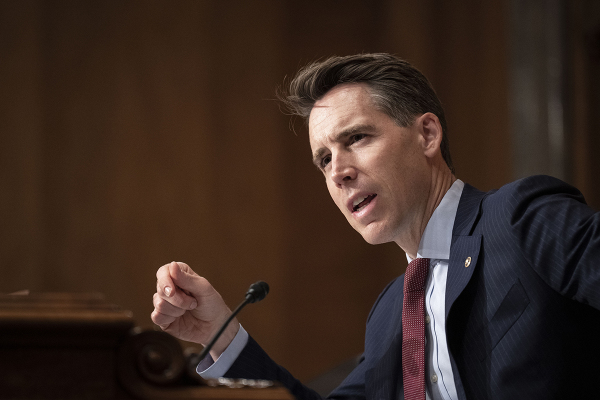4 essentials to leading change in a rural church context

The following is an excerpt from the book Four Essentials - Leading Effective Change in a Rural Church Context.
Across the United States, large numbers of small churches have turned inward.
Inward-focused churches are concerned with survival. Outward-focused churches seek to be a blessing to their communities. Inward-focused churches desire to grow, but only if it is safe growth. They expect that if they keep preaching the Word then people will come. Outward-focused churches understand the need to move into their communities with the love and Gospel of Christ. Inward-focused churches confuse methods with ministry. They assume that doing ministry means doing what they did forty years ago. Outward-focused churches understand the need to contextualize the unchanging truth in an ever-changing world.
Moving a church from an inward perspective with a chaplaincy mindset to an outward-focused, missional perspective is like turning a battleship in a hurricane. It is challenging at best. Doing so in a rural setting brings its own unique challenges.
Many rural communities are in transition; poverty, drugs, and alcohol are persistent problems. Culture is changing and becoming more diverse. Rural folks hear stories from the city and it scares them. Their natural response to change is to turn further inward and guard their safety.
So how do we change?
If the church cannot transition from an inward to an outward focus, any church growth likely will be transfer growth achieved by people moving from one church or community to another. Transfer growth cannot be sustained indefinitely. This is particularly true in rural communities with little population growth. A church must become more concerned about mission than about safety. Many churches develop policies, practices, and procedures based on the unwritten mission of mere survival. Learning to think outwardly and missionally is critical.
There are four essential elements to leading change.
First, personal preparation is critically important. The spiritual and emotional health of pastors directly affects their ability to lead change.
Second, the mental models of both pastors and congregations must be changed to be Kingdom-centric and others-focused. Significant change cannot happen until people begin to think differently. They need to see themselves and their world through new lenses.
Third, relational decision-making is essential. An imposed vision from the outside will rarely transform rural congregations. The vision must bubble up from within. Leaders of change must learn to ask the right questions and provide the right perspective to facilitate a fresh vision that comes from within the body. In rural ministry, pastors come and go. Congregations will never fully buy into the vision of a pastor they know will be moving on or who does not love their community as they do. Rural ministry is about relationships.
Fourth, there must be clarity of direction. Neither the leader nor the congregation will know what the church will look like in ten or twenty years, but they must be clear on why they exist and the direction God is calling them to move.
To gain clarity of direction, four questions must be answered. First, Where are we? Pastors are obligated to exegete their congregations and communities as effectively as they exegete the Scriptures. Congregations need to gain a fresh perspective of their communities. Often communities slowly change, yet congregations continue to function as though everything is the same as when they started as a church 20, 50, or even one 100 years earlier. Congregations must work to develop a clear vision of where they are functionally and spiritually as a church. Have they lost their passion? Are they no longer a congregation of young families? Have they turned inward? Is fear driving their decisions? A clear understanding of both their community setting and their present congregational condition is essential.
The second question regards forward movement. Where should we be? After determining their current context, they must then discern where they should be. An inwardly focused rural church is habitually focused on what used to be. The effective congregation will intentionally contemplate what they ought to become. To be outwardly focused, a congregation must be future-oriented, asking questions like: “Where should we be? What does it mean to love our community? Where is God at work?”
The third question addresses mission and purpose. Why should we be there? Why does a congregation exist and why does it do what it does? Knowing what, without knowing why, is demotivating. A clear understanding of the “why” gives clarity to the direction of a congregation. Biblical and practical aspects of the “why” are important. Great Commandment compassion needs to be melded with Great Commission conviction and a kingdom heart. Why should we be there?
The fourth question considers how to move forward as a congregation. How do we get there? A clear vision, without seeing any possibility of getting there, leaves the leader and the congregation discouraged and ready to quit. The entire path may not be clear, but there can be clarity on how to begin moving forward.
The four essential elements of effective leadership involve: 1. The spiritual and emotional health of the leader. 2. Challenging and changing mental models. 3. Relational decision making. 4. Clarity of direction. And four questions lead to clarity of direction and lay the foundation for healthy change: 1. Where are we? 2. Where should we be? 3. Why should we be there? 4. How do we get there? Without answering these questions change is simply change for the sake of change. Four action points establish a pathway to effective change.
The first action point is based on the first essential element of leading change, namely the spiritual and emotional health of the pastor. “We live in emotional environments that influence our functioning.”[1] Healthy congregations require spiritually and emotionally healthy leaders. A lack of spiritual and/or emotional health on the part of leaders undermines their ability to influence and lead effectively. It is essential that pastors and church leaders find ways to develop their own growth in the areas of spiritual and emotional health. In recent years much has been written about emotional health in Christian leadership. Ken Sande’s Relational Wisdom 360 and Peter Scazzero’s books are helpful resources.
Second, it is important to understand how systems function. This is important in leading a congregation through significant change. An understanding of systems theory and how family systems affect churches and church leadership is critical. “Becoming a better leader, for most of us, involves understanding group emotional process and knowing effective ways of addressing it.”[2]
One of Roberta Gilbert’s principles for leadership is, “Learn to ‘think systems.’”[3] Issues such as differentiation, cut-off, triangulation, and emotional fusion affect our leadership. It is critical for pastors and church leaders to understand systems thinking from a biblical perspective and its implications for church leadership.
Third, effective leaders assess the culture and demographics of their congregation and community. This enables churches to improve their understanding of how to reach out to their communities. These assessments could include demographic studies of the community surrounding the church as well as a process to carry out an empirical assessment based on experimentation and intentional observation. Along with community assessment, the spiritual health of the church needs to be assessed. This can be done using a reputable assessment tool[4]. Attention should be given to understanding the congregation’s perspective of and involvement in outreach, community service, external focus, and the active work of God in the community.
Fourth is patience. Leading a rural congregation through significant change will likely require a two to five-year plan. Movement toward missional thinking is evidenced in a congregation when individuals and congregational teams begin to value and design ways of connecting with outsiders through service and community involvement. It is further evidenced when congregations recognize where God is at work in the world outside their congregations and begin to discover ways to enter into that work. A plan for leading change should include training and challenging local congregations in missional thinking. It should include observation and experimentation. Plans should be designed to lead the congregation to discover creative ways of inviting outsiders into relationships and connecting with the work of God outside the congregation.
Many churches have turned inward, concerned with survival. They desire to grow, but only if it is safe. Outward-focused churches understand the need to move into their communities with the love and Gospel of Christ. They understand the need to contextualize the unchanging truth in an ever-changing world. Moving a church from an inward perspective to an outward, missional perspective is challenging. It requires emotionally and spiritually healthy leaders, challenging and changing mental models, relational decision-making, and clarity of direction.
May God transform His Church.
[1]. Peter L. Steinke, Healthy Congregations: A Systems Approach (Bethesda, MD: Alban Institute, 1996), 7.
[2]. Roberta M. Gilbert, Extraordinary Leadership: Thinking Systems, Making a Difference (Falls Church: Leading Systems Press, 2006), 48.
[3]. Gilbert, Eight Concepts, 112.
[4]. There are many tools available for church health assessments. Among them I would recommend: Jim Fann’s The EFCA Church Health Survey, Resource E from Leading Congregational Change Workbook, the Church Health Survey found online at https://www.healthychurch.net/chat.php, and Christian Schwartz’s Natural Church Development.
Richard Weinert has been in ministry for over 45 years, having served nationally and internationally as a teacher, a pastor in both rural and suburban settings, a missionary training center Director, denominational District Superintendent, mentor, and ministry consultant. He serves as Senior Vice President of Administration of Oak Hills Christian College and Program Director of their Certificate in Rural Leadership and Ministry.





















